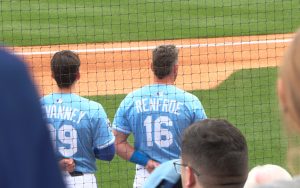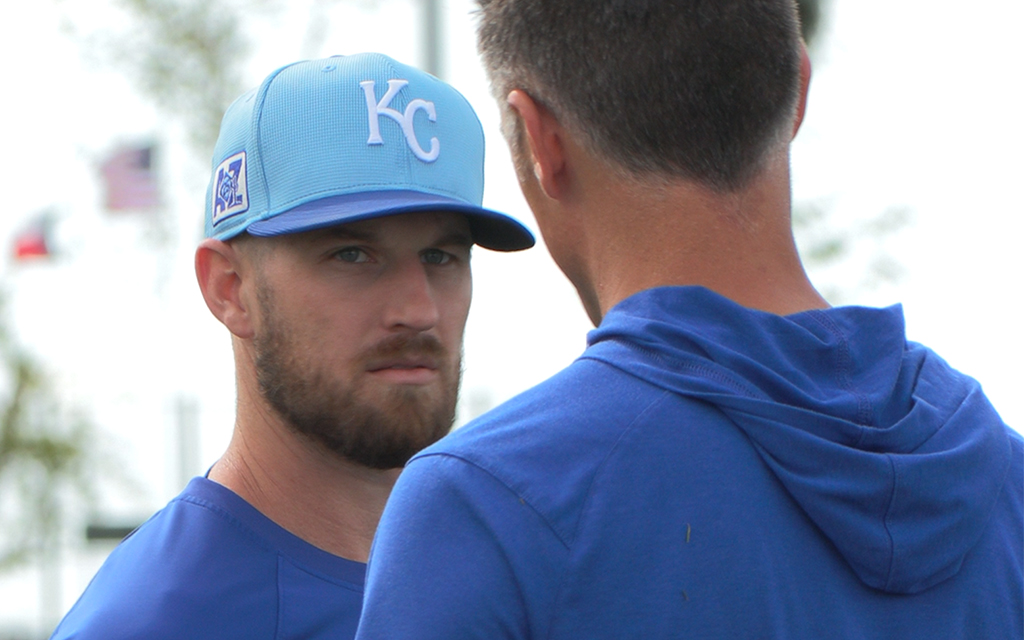SURPRISE – As a 2021 graduate of Park Hill High School in Kansas City, Carter Jensen, a highly touted catcher, faced unchartered territory.
A policy called Name, Image and Likeness had just become legal, and as a top prospect who was committed to playing for college baseball powerhouse LSU, Jensen was also waiting for a life-changing call as the MLB Draft approached.
But there was an added question for the players being drafted in 2021 that hadn’t been a reality of players selected in previous drafts: How would NIL change the landscape?
“My freshman year was going to be the first year of it (NIL), so we talked about it a little bit, but there (weren’t) specific numbers or anything like that, ‘cause it was so new,” said Jensen, who was selected by the Kansas City Royals in the draft’s third round. “It was the whole decision of take the money and come to the Royals, or go to school.”
NIL became legal in June 2021, meaning college athletes could profit by agreeing to deals with different companies to promote their product through commercials, autograph signing sessions, athlete jersey sales and social media posts. This was a massive breakthrough for college baseball players who had to share 11.7 scholarships between everyone who plays for each respective program. College baseball rosters have an average of 41.9 players on their rosters who can get a portion of the 11.7 scholarships allowed. Compare that to men’s basketball programs that have 13 scholarships for rosters that average 15.9 players.
As partial scholarships are a common thing among college baseball players, Royals pitcher Chris Stratton believes the inception of NIL is a good way for athletes to support themselves through college.
“A scholarship is a great thing, but I know in baseball there are only partial scholarships, so maybe having NIL would be helpful to the kids whose parents don’t have a lot,” Stratton said. “I’m definitely not against it, I do think there needs to be regulations on it as it kind of feels like the wild wild west. I’m all for people getting compensated for what they are but it does kind of seem like it’s becoming a professional sport more so than just college.”

Hunter Renfroe, a former Mississippi State star, prefers the ‘old-school’ approach to college baseball over the distractions of NIL. (Video screengrab by Max Williams/Cronkite News)
Although the NCAA has approved rules regarding the disclosure of NIL agreements, they must be reported to schools within 30 days of the deal’s agreement. Inconsistent rules across the board stem from each state having its own set of NIL laws.
Arizona prohibits athletes from signing contracts that conflict with team agreements or institutional intellectual property rights. In Missouri, high school athletes are allowed to start signing NIL contracts when they commit to a college.
The laws involving NIL contracts did not exist when Thomas Hatch played college baseball at Oklahoma State from 2014 to 2016. Instead, the NCAA Legislative Council allowed schools to provide unlimited meals and snacks to -athletes.
Hatch was thrilled to have the luxury of food available to the players, but he believes NIL deals are long overdue.
“I’m not a hundred percent familiar with the whole process, I’m so far removed, so that wasn’t even on the radar. We were happy to get meals,” said Hatch, a pitcher in the Royals’ organization. “I think it’s (NIL) definitely a good thing, I think these guys deserve it, college baseball is great, it helped me get to where I am today, and I think more people should be able to experience that.”
However, the idea of NIL is not well-received by everyone, as some people prefer to have a more singular focus on the game’s results. Royals outfielder Hunter Renfroe, who played at Mississippi State from 2011 to 2013, said he is a fan of old-school college baseball, where the performance on the field was the primary focus, rather than how many views players might get on their social media posts.
“I think it’s a terrible idea. I mean, I come from old-school college baseball where you went out there and worked hard for what you had,” Renfrow said. “It’s all about the branding of college baseball and what they are doing on Instagram instead of what they are doing on the field.”
As NIL continues to help players and brands on social media and draw more eyes to college baseball, Hatch believes the new opportunities will cause high school players to pursue the college route rather than going straight to professional baseball.
“The amount of money that goes into things definitely improves the product,” Hatch said. “It definitely will take some guys away from professional baseball and give them that opportunity to experience college.”


